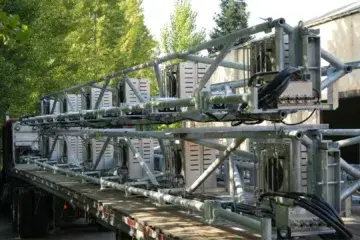Alabama has become the latest state to launch an action plan to tackle invasive species within their state boundaries.
The Alabama Aquatic Nuisance Species Management Plan allows the state of Alabama, the Alabama Department of Conservation and Natural Resources (ADCNR), Wildlife and Freshwater Fisheries (WFF) Division and Marine Resources Division to request federal funding to tackle invasive species such as Black, Bighead, Silver and Grass Carp.
According to a spokesman from the ADCNR “This is quite an extensive plan that covers quite a few taxa and species that are found or may be found in the freshwaters of Alabama,” “The impetus to get the plan completed and approved was the presence of invasive carp in the Tennessee River. It was a long process, but with the help of the Fish and Wildlife Service and the folks in the (WFF) Fisheries Section, we got it done. Now we have access to more money.”
Protecting Sportsfishing
Although Alabama does not have as much of the Tennessee River as other states it still forms an important part of Alabama’s famous sport fishing tradition. Most of Alabama’s invasive carp are caught around the Pickwick Dam, with other catches found further upstream in Wilson and Wheeler Reservoirs. These locations are some of the best Bass fishing in the state. As invasive carp are not part of the natural ecosystem, and can eat up to 40lbs of food per day, failing to deal with the threat at an early stage could lead to disaster, not just for the environment but also for the local economy.
What solutions are available?
With funding now potentially available for projects, it is worth highlighting the efforts that have been approved or tested to combat invasive carp across the Tennessee River basin.
In a report released at the end of last year, the Tennessee Valley Authority (TVA) stated that they planned to install seven BioAcoustic Fish Fences (BAFFs) across their jurisdiction to help stop the spread. This includes Pickwick and Wilson Dams.
A BAFF system utilises a combination of sound and bubbles to create a barrier that deflects invasive carp but keeps the waterways open to boat traffic and tourism. One such system is currently on trial at Barkley Lock, Kentucky, with preliminary results showing that it is highly effective in deterring invasive carp from moving through the lock system.
Both Local and National Plans Needed
Alabama has joined a number of states and organisations that have put pen to paper on plans in the last year or so. Ohio and Illinois, as well as organisations such as the TVA and the Great Lakes Restoration Project all have proposals to help protect the environment from invasive threats within their boundaries.
Good technology helps deliver those plans. If your state or organisation is looking for solutions to help control invasive carp in your area, please contact our team at [email protected]


